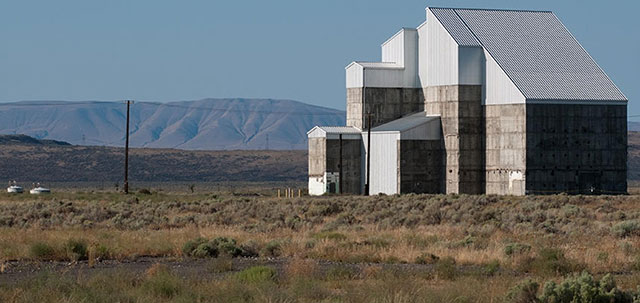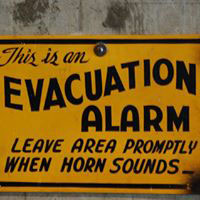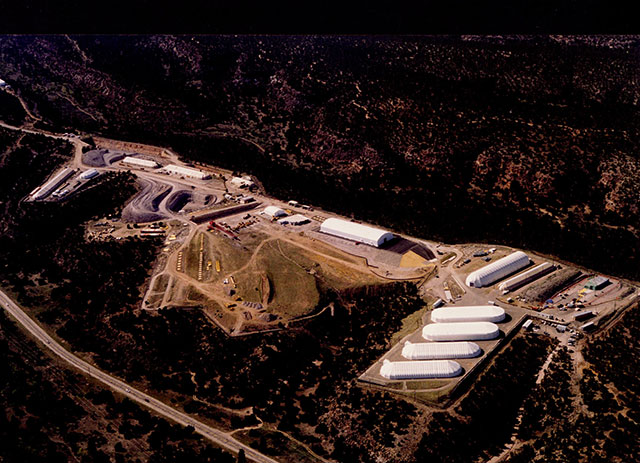
Did you know that Truthout is a nonprofit and independently funded by readers like you? If you value what we do, please support our work with a donation.
Renowned wartime journalist Wilfred Burchett described the damage from the atomic bomb that flattened Hiroshima as “far greater than photographs can show.” When it comes to the enduring legacy of the Manhattan Project on home soil, the damage to the environment and human health is proving similarly hard to grasp.
The covert project to create the world’s first atomic weapon during WWII, coupled with the nuclear proliferation of the Cold War era, has left a trail of toxic and radioactive waste at sites across the nation that will necessitate, by some margin, the largest environmental cleanup in the nation’s history. The amount of money that has been poured into remediating the waste already is staggering. Still, it appears that the scale of the problems, and the efforts needed to effectively tackle them, continue to be underestimated by the authorities responsible for their cleanup.
Since 1989, the Department of Energy’s (DOE) Office of Environmental Management — the agency charged with cleaning up “legacy” radioactive waste — has spent over $164 billion disposing of nuclear waste and contamination, completing the cleanup at 91 of 107 sites across the country. And yet between 2011 and 2016, the DOE’s Environmental Management environmental liability grew by roughly $94 billion.
Though the president’s proposed 2018 budget siphons $6.5 billion into the DOE’s Environmental Management program, up slightly from $6.2 billion this year and last, that figure is still below the roughly $8.5 billion (after adjustment for inflation) the program received in 2003. It is also well below the amount required to effectively meet urgent issues head on, said Don Hancock, director of the Nuclear Waste Program at the Southwest Research and Information Center.
“The small percent increase … doesn’t really get us to where we need to go,” said Hancock. A lack of specificity in the budget makes it unclear as to how the Environmental Management office will divvy up that money, and whether the projects that pose the highest risk to the public and environment will get the funds they need, he said. “Without knowing the specifics, we don’t know how much is really going into cleanup … and where.”
Not that the money has always been wisely spent. The Government Accountability Office (GAO) has repeatedly found flaws in cleanup efforts at DOE sites. Boondoggles have escalated the costs at some facilities, while at others, radioactive waste has simply been buried and capped on site, rather than removed and remediated fully, critics point out.
“It’s a case of kicking the can down the road,” said Scott Kovac, operations and research director at Nuclear Watch New Mexico. “You’d think the federal government would set an example of cleaning up this mess, but they’re just acting like another corporation … doing as little as possible.”
The DOE repeatedly touts its successes in removing and remediating legacy wastes, pointing to “exemplary work” done at some sites. The department, however, failed to respond to multiple requests for comment by Truthout about the agency’s handling of the cleanups at contaminated facilities, and about any possible impact on these cleanups from the proposed budget.
While cleanup coffers have generally shrunk, the amount of money funneled into refurbishing the nation’s nuclear arsenal has increased markedly. The US is already slated to spend approximately $1 trillion on a nuclear armament modernization program over the next 30 years. In his 2018 budget proposal, the president allocates an extra $1.4 billion to the National Nuclear Security Administration (NNSA) for nuclear modernization, an 11 percent increase from 2017 levels.
Asked whether the additional $1.4 billion will be used to accelerate the 30-year modernization program, or whether the funds will be added to the existing $1 trillion budget, an NNSA spokesperson wrote that when the proposed budget is transmitted to Congress, “we will be able to provide additional details.”
The fight over what the final budget will look like has only just begun. But beyond these hovering questions marks is something much more concrete: the sheer magnitude of the legacy waste problem, which can be traced all the way back to that game-changing atomic project of the 1940s.
Hanford: Beset With Costly Overruns
Hanford, Washington, is a Manhattan Project era facility perched on the lip of the Columbia River, and the scene of the largest single radioactive remediation in the US. Last year, the DOE championed “20 successful years” of environmental cleanup at Hanford, which was decommissioned in the 1980s. Fifty-six million gallons of toxic waste were subsequently stored away in 177 large tanks, some of which have leaked high-level radioactive sludge into the environment. Efforts to build a pretreatment plant for this waste — with the idea of sending that treated waste to adjacent facilities for final processing — have, for years, been beset with costly overruns, as well as administrative and corporate failings.
The cost for treating the 56 million gallons of waste alone now sits at $16.8 billion. The projected cost of cleaning the rest of the facility? $107.7 billion. That’s not all. At least a million gallons of radioactive waste have leaked into and polluted the waters of the Columbia River, contaminating fish eaten by Indigenous people in the area, and threatening drinking water supplies for communities downriver.
The groundwater pollution at Hanford poses its own significant challenges. Currently, a 125 square-kilometer groundwater plume of Tritium — a radioactive form of hydrogen that is a carcinogen at certain doses — leaches into the Columbia River. Then there’s a 58.8 square-kilometer plume of iodine-129 (a radioisotope of iodine, with links to thyroid tumors). The iodine-129 plume is expected to reach the Columbia River in anywhere between five and 30 years.
At his confirmation hearing, new DOE secretary Rick Perry said he was committed to “prioritizing what is one of the most dangerous, polluted sites we have in the country.” Daniel Serres, conservation director with Columbia Riverkeeper, is encouraged by Perry’s comments but is watchful for any “slackening” of efforts at the site.
“The cleanup at Hanford is nondiscretionary in that radioactive and toxic contamination is leaching into the Columbia River right now,” said Serres. Tom Carpenter, executive director of the Hanford Challenge and former director of the Nuclear Oversight Campaign for the Government Accountability Project, agrees.
“A lot of money goes to simply monitoring conditions at the site to prevent an accident from happening,” he said. The complexity of problems, and the sheer volume of radioactive wastes stored, necessitates a stringent oversight program there, he added. “You can’t cut those kinds of functions because it might cause a multistate radioactive catastrophe.”
Oak Ridge: “70 Years of Neglect”
The DOE’s 33,500-acre Oak Ridge Reservation in Tennessee was a uranium processing facility during the Manhattan Project. It has since been divided into three major cleanup sites. Still active, Oak Ridge is perhaps most notorious for widespread mercury pollution. The DOE estimates that roughly 700,000 million pounds of mercury stemming from the plant has contaminated the soils, and surface and ground waters both on and off the base for decades. The construction of a mercury treatment facility — to treat up to 3,000 gallons of contaminated water per minute — begins next year but won’t be fully operational until 2022.
 A sign from the old operations at Hanford, in Washington State, where an estimated $107.7 billion is still needed to clean up the remaining waste. (Photo: Courtesy of Columbia Riverkeeper)The sheer breadth and complexity of the remaining problems at Oak Ridge splinter opinions as to what most urgently needs to be addressed. For example, an abandoned building at Oak Ridge once used in processes involving uranium, mercury and barium was identified in a 2015 report by the DOE Inspector General as the “worst of the worst” among some 234 high-risk facilities nationwide. The report highlighted the risk of “explosion or reaction” associated with remaining contaminants at the building, and concluded that the facility presents a “high risk to the workers and environment.” That building is one of some 270 buildings waiting to be decontaminated or destroyed, while heavy rainfall in the area carries remaining untreated contaminants to local waterways.
A sign from the old operations at Hanford, in Washington State, where an estimated $107.7 billion is still needed to clean up the remaining waste. (Photo: Courtesy of Columbia Riverkeeper)The sheer breadth and complexity of the remaining problems at Oak Ridge splinter opinions as to what most urgently needs to be addressed. For example, an abandoned building at Oak Ridge once used in processes involving uranium, mercury and barium was identified in a 2015 report by the DOE Inspector General as the “worst of the worst” among some 234 high-risk facilities nationwide. The report highlighted the risk of “explosion or reaction” associated with remaining contaminants at the building, and concluded that the facility presents a “high risk to the workers and environment.” That building is one of some 270 buildings waiting to be decontaminated or destroyed, while heavy rainfall in the area carries remaining untreated contaminants to local waterways.
“They say the squeaky wheel gets the grease, but what happens when every wheel on your giant 18-wheeler is squeaking?” said Ralph Hutchison, coordinator of the Oak Ridge Environmental Peace Alliance. He said that multiple administrations have failed to pour adequate funds into addressing the problems at Oak Ridge: “This is 70 years of contamination matched by 70 years of neglect.”
Los Alamos National Laboratory: Remaining Cleanup Underestimated?
The Los Alamos National Laboratory in New Mexico was the scientific nerve center of the Manhattan Project. It was here that the nuclear devices used in the first atomic tests of 1945 were made. A 46-page DOE cost estimate published last year lists 17 separate areas scattered throughout the some 38 square-mile Los Alamos site still to be tackled, including unlined disposal pits, leaking underground storage tanks, polluted hillsides and canyon bottoms, waste landfills and old contaminated buildings. At one site alone, some 3,882 metal drums and 191 fiberglass-reinforced plywood boxes containing transuranic wastes (a specific category of radioactive waste) are sitting in a pit waiting to be disposed of.
The DOE has proposed capping and covering toxic and radioactive waste (some estimates put the amount at 350,000 cubic meters) buried in multiple unlined pits at a 65-acre site called Area G, a scenario that would threaten underground aquifers, warn experts. One of the highest cleanup priorities at the facility, said Scott Kovac, is a large groundwater plume of carcinogenic hexavalent chromium about to migrate off site, threatening groundwater beneath the adjacent San Ildefonso Pueblo’s tribal land.
 Aerial shot of Area G at Los Alamos National Laboratory, New Mexico, where some experts estimate that as much as 350,000 cubic meters of toxic and radioactive waste is buried in unlined pits, waiting to be capped. (Photo: Trish Williams-Mello, Los Alamos Study Group)
Aerial shot of Area G at Los Alamos National Laboratory, New Mexico, where some experts estimate that as much as 350,000 cubic meters of toxic and radioactive waste is buried in unlined pits, waiting to be capped. (Photo: Trish Williams-Mello, Los Alamos Study Group)
Last year’s report estimates that the cleanup will be finished between 2035 and 2040. And it won’t come cheap. The report projects that it could cost another $3.8 billion to complete, and some consider that number on the conservative side.
Greg Mello is a cofounder of the Los Alamos Study Group, an organization that has put together a comprehensive online picture of the pollution at Los Alamos using detailed contamination maps acquired as a result of a lawsuit. Using these maps, the scale of the remaining cleanup there is being underestimated, said Mello, who added that new radioactive wastes that continue to be generated there threaten to “drive the cleanup backwards.”
West Lake: “It’s Pretty Devastating”
In North St. Louis County, Missouri, next door to residential communities, sits West Lake landfill, where roughly 45,000 tons of soil mixed with radioactive Manhattan Project-era waste was illegally dumped back in 1973. As close as 700 feet from the buried radioactive waste is an underground fire that has been slowly smoldering for at least six years.
The Manhattan Project-era radioactive waste that ended up at West Lake took a circuitous route to its current destination. The waste was originally stored at the Mallinckrodt chemical plant in downtown St. Louis, until the plant began shipping it to the St. Louis airport in the 1940s. In the 1960s, a company that had bought the airport waste then trucked it to another property in St. Louis, before the waste was taken in the early 1970s to nearby West Lake, where it has remained ever since.
Mishandling of the waste has left a zig-zag trail of radioactive contamination. Daughter products (the products from radioactive decay) of radon gas have been found beyond the perimeter of the West Lake landfill, though at levels below EPA cleanup thresholds. Radioactive contamination was detected in a home a quarter of a mile from the landfill, according to a lawsuit filed at the end of last year. A health study involving over 4,500 participants suggests strong links between high instances of cancer and chronic illnesses in the area and radioactive contamination stemming from materials originating from the Mallinckrodt chemical plant. But it’s the fire that has local residents most worried.
“It’s pretty devastating,” said Dawn Chapman, who lives within 2 miles of the landfill with her husband and three children. “It shakes your faith in your government. When you think about the Manhattan Project, you don’t think about living less than two miles from what is probably the world’s biggest serial killer.”
Critics are pressing for the US Army Corps of Engineers to take over responsibility for the cleanup from the Environmental Protection Agency (EPA). Until then, many are concerned about Trump’s proposal to slash funding for the EPA by around 31 percent.
“The EPA’s budget is very significant,” said Robert Alvarez, senior scholar with the Institute for Policy Studies, a Washington-based think tank, and formerly a senior adviser to the Secretary of Energy during the Clinton administration. “If you cut back on oversight and compliance and enforcement on top of your staffing cuts, there’s no examiner to show up at the back door,” Alvarez warned.
The EPA failed to respond to requests for comment before deadline.
Concerns About the Future
Hanford, Oak Ridge, Los Alamos and West Lake provide only a snapshot of the wider picture. Consider the Rocky Flats Plant, a former nuclear weapons production site not far from Denver, Colorado. Rocky Flats wasn’t part of the Manhattan Project — it wasn’t used to manufacture nuclear weapons until the Cold War era — but it’s still a glaring example of the pervasiveness of the nation’s ongoing nuclear headache.
Officially, the cleanup at Rocky Flats was finished over 10 years ago, at a total cost of some $7 billion. It has frequently been championed as a success story. But some experts are concerned about plutonium that remains buried there. “It’s a cover-up, not a cleanup,” said former Rocky Flats Coalition of Local Governments member Mary Harlow, about efforts to remediate the site.
In particular, advocates are concerned about plutonium buried on a wildlife refuge that has now been opened to the public. The buried plutonium, experts warn, can rise to the surface before being unearthed and carried through the air, threatening growing communities around the perimeter of the site.
“It’s just too dangerous for people to go walking around out there,” Harlow said.
Carl Spreng, with the Corrective Action Unit of the Colorado Department of Public Health and Environment wrote in an email that “decades of comprehensive air monitoring have demonstrated that routine air sampling is no longer required.”
However, Spreng’s comments are “very misleading,” said micrometeorologist Dr. Gail Biggs, who has been involved with the cleanup at Rocky Flats in various capacities for decades, including as a consultant. According to Biggs, the amount of airborne plutonium isn’t known because the air monitors used weren’t sensitive enough to detect fine radioactive particulates. “It’s really a scary place as far as I’m concerned, and dangerous,” he said.
In terms of cleanup costs alone, Rocky Flats is relative small fry. Half of the DOE’s environmental liabilities belong to Hanford and the Savannah River Site, in Georgia, where a cleanup has been underway since the early 1980s. The Savannah River Site is an active research facility, and some experts are concerned that the ongoing modernization of the nation’s nuclear arsenal produces new wastes that are only adding to the overall burden.
For Marylia Kelley, executive director of Tri-Valley CAREs, any increased spending on the nuclear modernization program at active facilities like the Lawrence Livermore National Laboratory in California has even more troubling implications. She pointed to Trump’s heated nuclear rhetoric and the additional NNSA funds in the proposed budget.
“We’re on an extremely dangerous trajectory,” Kelley said. “We’re on a slippery slope to a new nuclear arms race.”
Press freedom is under attack
As Trump cracks down on political speech, independent media is increasingly necessary.
Truthout produces reporting you won’t see in the mainstream: journalism from the frontlines of global conflict, interviews with grassroots movement leaders, high-quality legal analysis and more.
Our work is possible thanks to reader support. Help Truthout catalyze change and social justice — make a tax-deductible monthly or one-time donation today.